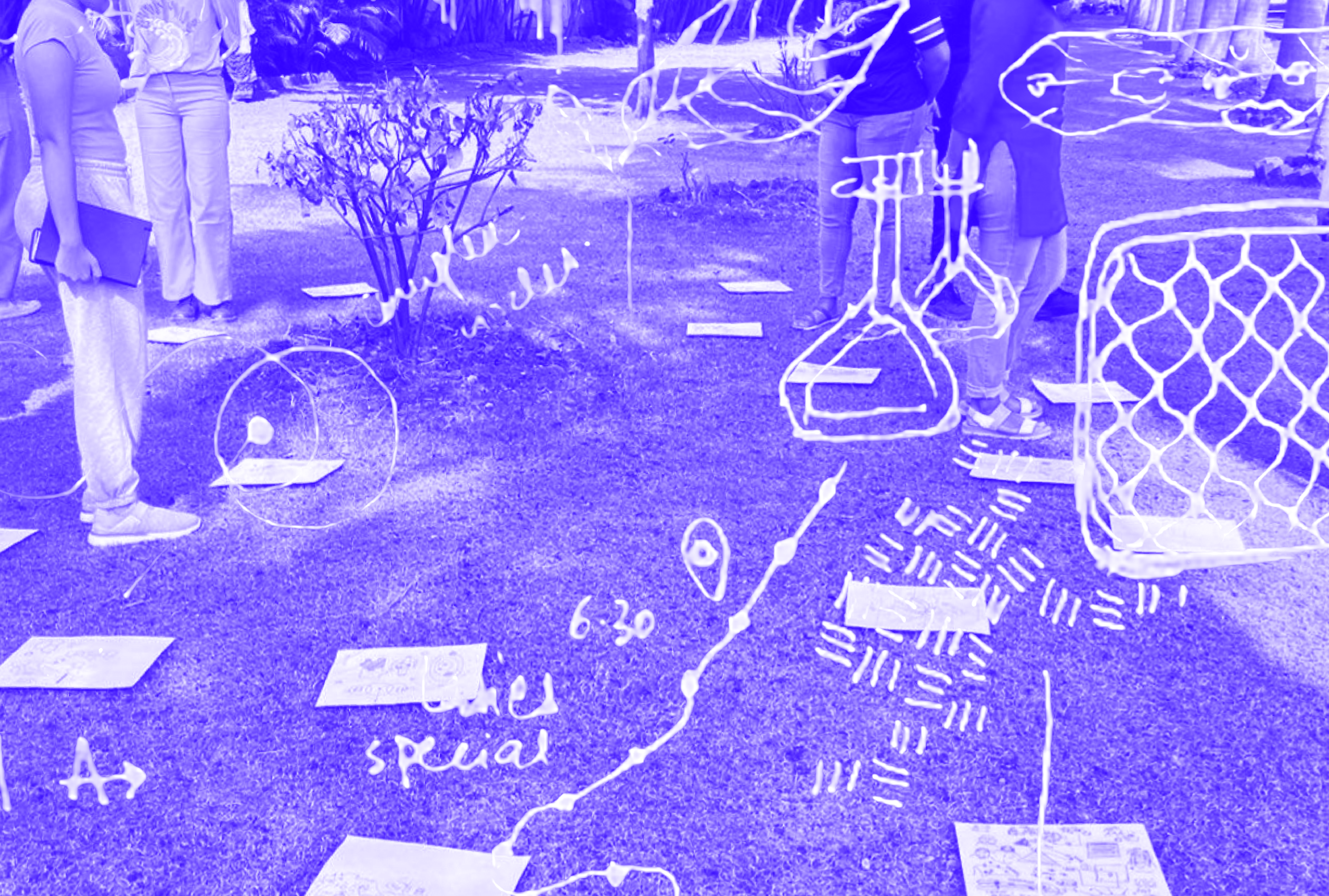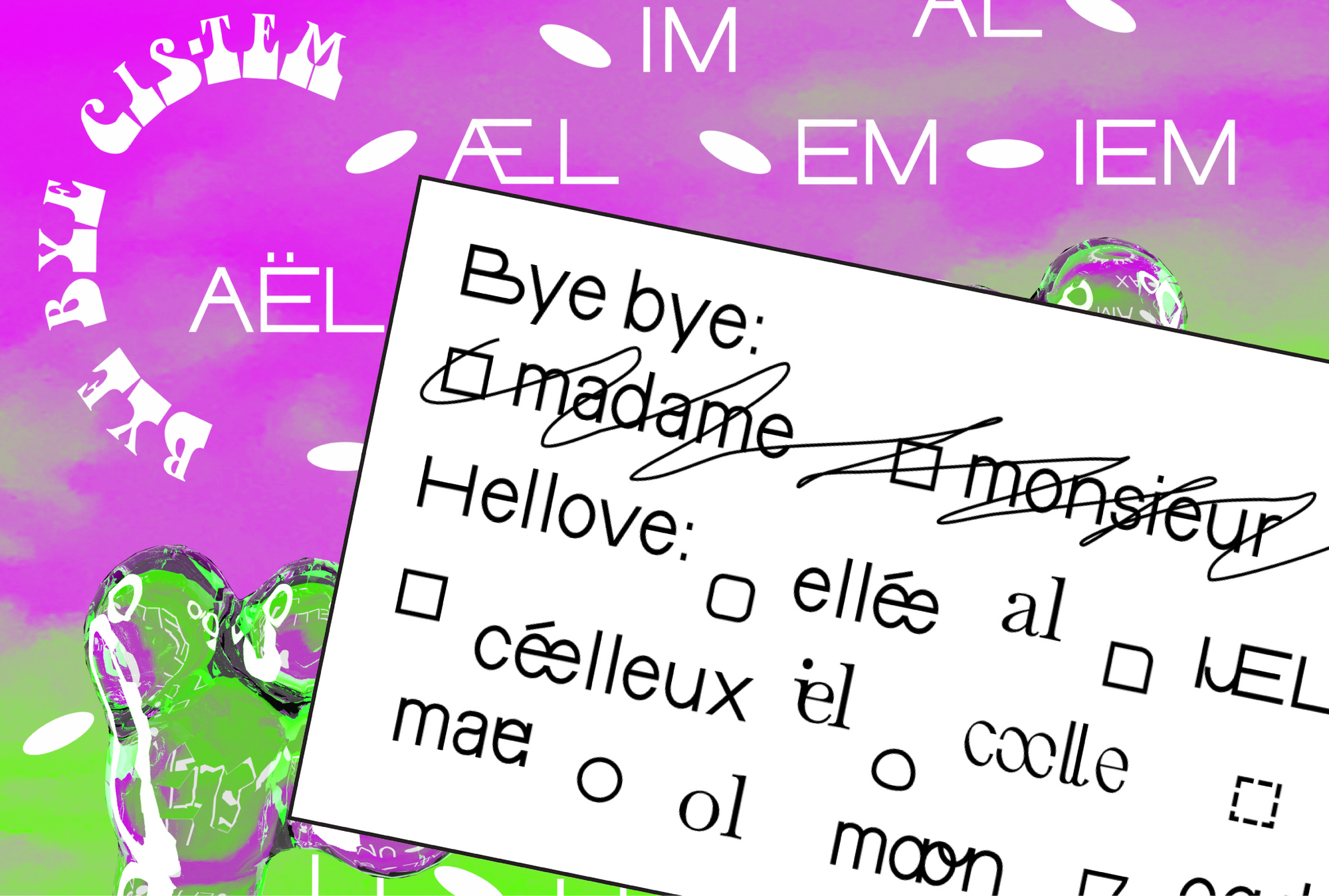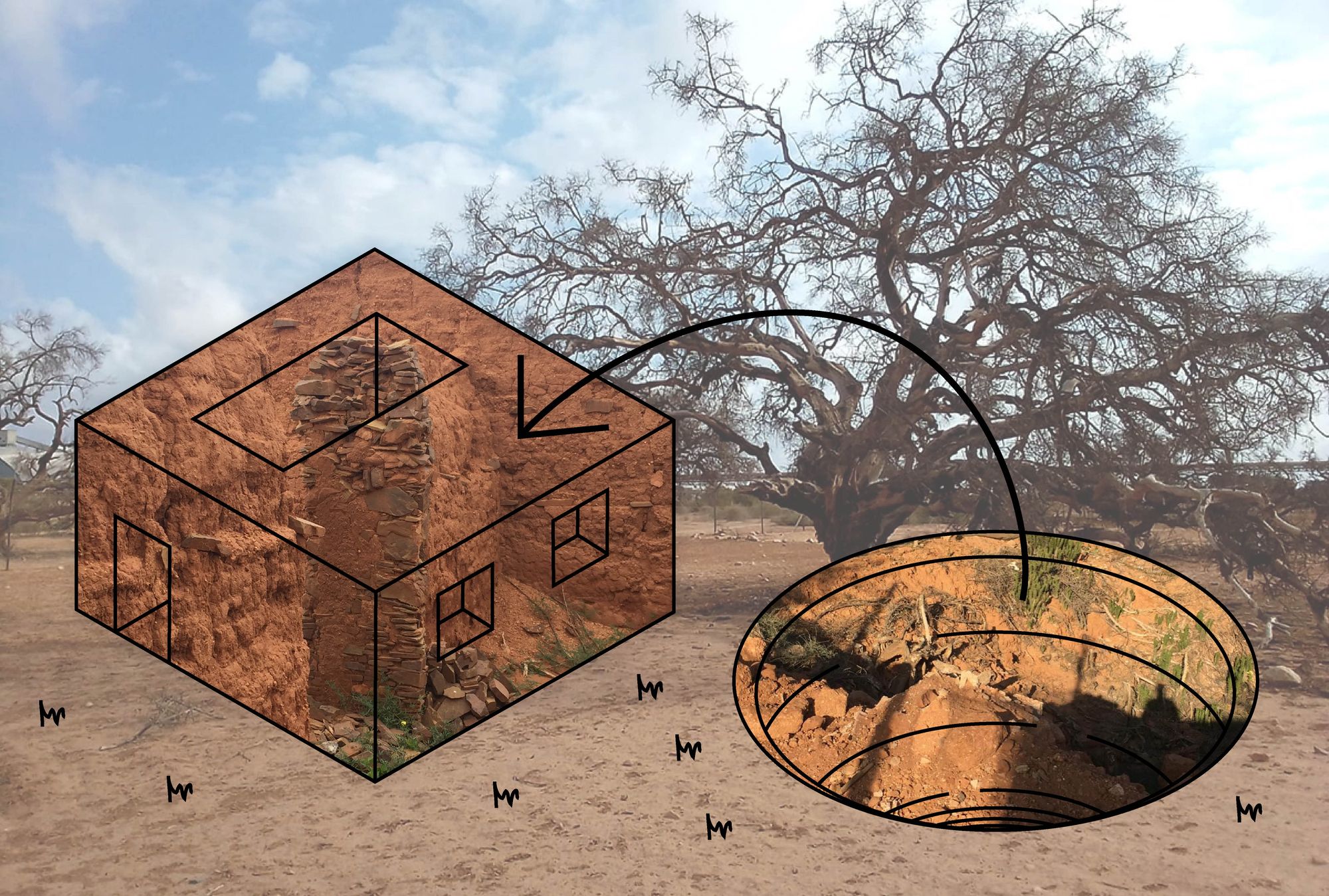
Assassin’s Creed had me under a spell. In 2014, I was a naive 20-year-old completely absorbed by the newly released Assassin’s Creed Unity, the action-adventure video game series taking place in the aggrieved 1789 Paris. The story follows Arno, a young man who embarks on a perilous journey to uncover the true powers behind the French Revolution. The game moved me to the core. Its revolutionary spirit spoke to me—only three years had passed since the series of anti-government protests and armed rebellions of the 2011 Arab Spring. I even identified with its built environment—the urban fabric of Paris bears some similarities to downtown Cairo, where my friends and I used to demonstrate.
I was captivated in a whirl of feverish excitement. I wanted to immerse myself in the upheaval led by the oppressed commoners. I wanted to be one of these protesters fighting against the feudal rule, monarchy’s abuse of power, and poor economy—causes strikingly similar to our struggle back in Egypt. However, the game’s design made the protesting crowd apolitical and passive. Instead of being politically active, protesters are passive companions to the main protagonist Arno, helping him hide from Louis XVI’s guards within the complex scenery of the game, yet lacking any agency. Even though the game depicted the 1789 Women’s March on Versailles, it stripped the crowd of women and their allies from their knives, sticks and weapons; instead, the male protagonist Arno was assigned the task of protecting the march. The game silenced the crowd by keeping the mobilization as a backdrop to the protagonist’s heroic actions, asserting masculinity as a savior mechanism.
“I longed to be represented, and I waited for the programming code to give me political agency.”
The first time I played Assassin’s Creed Unity, it lured me through its spectacular and nostalgic construction of Paris. As a young revolutionary at heart, I longed to be represented, and I waited for the programming code to give me political agency. However, I quickly realized that even though the game reconstructs historical events of protests and widespread discontent, the portrayed crowd doesn’t speak up against the power; instead, they are non-player characters (NPCs) following the developers’ algorithm. The game’s code indicates what is active and what is not, what gets political effectiveness and what doesn’t, and who gets represented and who doesn’t.
The massive crowd of protesters in the game doesn’t aim to foreground the voice of French peasantry’s discontent with the monarchy. Instead, it serves some technical purposes to challenge modern computing hardware performances. Since the 1990s, an industrial narrative centering on technological progress and commercial success has dominated the development of video games. Consequently, the more the number of animated characters a game frame can handle, the more we can measure the game’s success from a technical perspective. Code is expensive; a massive volume of bytes is transported into players’ screens, as much as their processors can take. So developers choose to give more power, dynamics, or mechanics to a specific object, a person, or a story—and, consequently, to deprive others of that. This is an intentional choice, as they clearly understand the economy of play—an economy that, in many games, intentionally undermines protesters’ existence.
While the dazzling visuals of the constructed spaces and architecture are breathtaking, the industrial narrative underpinning the bodies of protesters in the game is problematic. Assassin’s Creed Unity is advertised to have one of the largest animated crowds in the game series’ history. Developers promote the capacity of the game space to accommodate 30,000 characters and its ability to hold 12,000 characters in a single frame. Unfortunately, the technological narrative absorbs the players to compare the fidelity of crowds’ animations to real-world crowds’ interactions, instead of posing questions about the angry mob, their social-class division, the motives behind the protest, or how they ended up occupying the streets of Paris. The code inhibits our criticality.
Playing the Oppressor
“You have to disperse those parades!” “Send police officers to secure the rally and make sure everything goes smoothly!” scream the commands from two video games in which the player acts as a police officer on a mission to contain public protests. But why are there riots in Soho? And why are citizens frightened during the Hamburg demonstration? As a player, you are not supposed to ask these questions, and even if you did, you wouldn’t get an answer; your role is to obey and follow pre-coded commands.

Suppose you follow these commands and choose to play with power. In that case, you are granted playability through a linear narrative, a problematic feature in video games. Still, the Sleeping Dogs and Emergency series represent the progression of the ludic experience. Once you decide to withdraw in an attempt to let protesters win, the code will hinder your playability by depriving you of chronological progress. This narrative technique describes the unfolding of a game in a specific path that players must follow, which, according to video game writer Meghna Jayanth, mirrors the colonialist idea of a direct, clear progression from savagery to civilization. In the Emergency series or Sleeping Dogs, the code, the backbone of the games’ visuals and narrative, is only designed and tailored to serve the oppressor’s narrative of progression. In this linear narrative, players become better cops equipped with superior equipment the more they obey commands.
“In the Emergency series or Sleeping Dogs, the code, the backbone of the games’ visuals and narrative, is only designed and tailored to serve the oppressor’s narrative of progression.”
In Sleeping Dogs, you play a male Chinese-American police officer trying to take down criminal groups within the streets of Hong Kong. The protagonist takes advantage of his martial arts skills and police equipment by using extreme violence to accomplish the game’s various missions, even if the opponents are unarmed. Players can direct violence toward civilians at any moment, as shown in a 2019 YouTube video, which has since been removed due to its violent content. During the outburst of the 2019 Hong Kong Protests against the government, a pro-Chinese YouTuber published a machinima—a cinematic animation created with a video game engine—based on Sleeping Dogs. Walking in the virtual streets of Hong Kong, the video reveals an imaginary dialogue over the original game story. If the civilians resemble those who supported protesters in Hong Kong—what the Youtuber calls “ringleaders,” such as a nurse who plotted intentional injuries to Hong Kong police officers or local businessmen who supported protesters—the YouTuber cruelly attacks them. The way game mechanics are coded facilitates a singular imaginary and a particular fantasy of violence, order, and control in which Hong Kong protesters are tortured in the city’s physical spaces as well as in the cyberscape of video games.
Emergency is a series of simulation video games mimicking real-world activities. Players control the fire and police departments and respond to emergencies, rescuing citizens during natural disasters or arresting law violators. A repeated task through the different series of the game is dispersing crowds and arresting criminals during a public demonstration. Nonetheless, the story was slightly modified over the years, from spontaneous protests scattered over the city in Emergency 4, an unauthorized demonstration against the ministry of health in Munich in Emergency 5, to a frightened anti-Islam rally in Hamburg in Emergency 20.
“What seems to be conveyed here by developers is that the political inclination of protesters does not matter. Regardless of the crowds’ political standing, unrest must be policed, primarily since the game never details the politics behind each protest”
I wonder why the plot has changed from a health/human rights narrative to a right-wing ideological one. At first, I presumed that developers are protecting the mechanisms of democracy the same way some intellectuals defend neo-fascists’ right of free speech. But after a few hours of play, it becomes evident that the game does the opposite. The player follows the instructions without having the time to make an opinion. What seems to be conveyed here by developers is that the political inclination of protesters does not matter. Regardless of the crowds’ political standing, unrest must be policed, primarily since the game never details the politics behind each protest. To be included in their game space, Emergency and Sleeping Dogs force us to suspend our moral faculties and follow their biases unthinkingly. The player’s only choice is to see protesters as enemies, obey the code, and learn to be a “good” police officer.
The (Ir)rational Crowd
When game developers do not use the code to label protesters as a clear enemy, games like SimCity antagonize protests and protesters in a different way. SimCity is a simulation game aimed at modeling the behavior of an actual city on the computer. Released in 1993, SimCity 2000 is one of the earliest games in the market that introduced public dissent and defined it as riots. Riots in the game are a threat—caused by increased crime or lack of education—that must be solved as quickly as possible. As a city mayor, the player must violently suppress dissents before thinking about social or economic solutions. According to U.S. technologist Julian Bleecker, introducing riots in SimCity 2000 was a last-minute decision in response to the Los Angeles uprising in 1992. The acquittal of Los Angeles Police Department (LAPD) officers involved in the brutal arrest and beating of African-American Rodney King led to the most violent upheaval in the United States since the late 1960s.

Racism was the primary catalyst of the L.A. riots; however, it is impossible to see racial unrest in the SimCity series. Riots only happen when the population becomes very unhappy and deprived of essential services, or if players intentionally press a button on the screen triggering riots. Thus, the game strips riots from their roots in racial injustice, rendering protesters chaotic, passive, and irrational versus organized and spatially aware police. Such awareness is seen in how the game’s algorithm performs during these events. For example, a simple Google search including “SimCity” and “riots” reveals myriad bits of advice on how to stop the riots: from adding more police stations and prisons through using several police dispatches per riot crowd, to demolishing bridges to prevent the spread of riot in the city.
“[The video game Sim City] strips riots from their roots in racial injustice, rendering protesters chaotic, passive, and irrational versus organized and spatially aware police.”
We often witness these urban tactics in our daily life. Oppressive authorities recognize the role of public spaces in fostering a collective consciousness. Therefore, we see strategies of marginalization and exclusion trying—often successfully—to take the space away from the public. Strategies range from policies of privatization of public spaces and blocking streets and squares, to physical and lethal use of police force. Taking down bridges is also a commonly used tactic. In 1946, hundreds of Egyptian students took to the streets to oppose the British military occupation of Egypt. As a response, the army opened the moveable “Abbas” bridge linking Giza and Cairo, which led to dozens of protesters drowning. Also, 70 years later, in the U.S.A. in 2020, Chicago police raised the city’s bridges during the George Floyd protests to prevent protesters from crossing to the other side.
By separating the racial injustice roots of riots from the magnitude of infrastructural damage caused by rioters in SimCity and offering policing tactics as a solution, the game’s narrative purposefully vilifies protest. This practice is particularly dangerous, as SimCity is not a combat game but rather a strategic one about city-making, in which urban awareness and rationale are the ongoing tactics. The internet is filled with idealized stories about the game’s potential in teaching urban planning and strategy-making. However, the more I play SimCity, the more I realize that the game teaches us something problematic about social movements, portraying protests as mindless and irrational and categorizing them as enemies.
To Renew our Habits of (Coding) Protest
“I don't think scale is our friend. I think scale is our enemy”
—Fred Moten
In his uplifting conversation with U.S. historian Robin Kelley, Fred Moten, a Black cultural theorist and poet from the U.S.A., highlights the necessity to renew our habits of assembly. We need to learn how to do a better job getting together in theory and practice. He points out that the Civil Rights Movement was not a mass movement, reminding us that scale can be a counterproductive formulation in renewing our habits of assembly. Moten calls us to work on “a small scale with a kind of patience, with ethical regard for one another” and “with a hopefully infinite proliferation.”
So far, we can count thousands of protesters in Assassin’s Creed Unity, and hundreds in SimCity, Sleeping Dogs, or Emergency. This amasses a substantial number of people who are capable of having a voice and an impact. However, protesters are passive, irrational, and unseen in all these games. Whether there may be some aggrieved workers protesting for social justice or a far-right-wing group standing in anti-Islam protests, the truth about these in-game events is never announced or questioned. Numbers don’t have an impact on the story of the game. What matters is the voice of the game’s creator, who writes the code and designs the elaborate scenes, and who simultaneously represents the voice of the state, giving it legitimacy and rendering protesters unseen.
“Protesters are passive, irrational, and unseen in all these games. Whether there may be some aggrieved workers protesting for social justice or a far-right-wing group standing in anti-Islam protests, the truth about these in-game events is never announced or questioned.”
From the 1993 SimCity till the 2017 Emergency video games, the role of protesters in mainstream titles has hardly changed. Game designers follow an outdated understanding of protest, following scholarships from the first half of the 20th century when Western-European psychologists and sociologists defined crowd behavior as criminal and irrational. This account inferiorizes protesters’ stories and encourages policing urban strategies. I wonder if it is not time for game design to start being a spatial exercise tool through which we, protesters, can practice and acquire urban tactics that stand against the state’s oppression?
What my protester self wants from a video game is to incubate our micro-urban tactics and stories. During the occupation of Tahrir Square in Cairo back in 2011, we rearranged the space to function as our occupied realm, strategically positioning sleeping zones, day-cares, on-site hospitals, art spaces, different circles for speech, and lavatories. Video games have the potential to let us understand how small groups of bodies get together in a common space and how they grow in numbers and increase in infinite proliferation.

A massive body of protesters makes way for ambulances in the 2014 Hong Kong demonstrations. Catalan pro-independence demonstrators in Barcelona 2017 create semi-circular spaces employing intuitive acoustic design. During Standing Rock in North Dakota in 2016, protesters stood and sat arm in arm, forming circles around a few bodies to protect them from police brutality. In the same year, Iraqi protesters climbed over the parliament’s walls demanding members to leave; protesters used vertical elements to stand, speak, and be seen. I see an urgency in developing game narratives centering on the protesting crowds’ micro-stories in the public space—instead of depicting them as irrational bodies, a mere backdrop for the dichotomous division between protesters and the police.
Hamza Bashandy (he/him) is an architect who also makes video games. An FNRS researcher at the University of Liège, Belgium, his doctoral research examines the representation of spatial claims from the margins by looking at video games as potential spaces of resistance. He was a visiting researcher at the Technoculture, Art, and Games (TAG) centre at Concordia University. Currently, Hamza's project aims to confront code in video games to assess its effect on generating democratic spatiality and its impact on altering the politics of the body in the gamespace. It seeks to challenge Eurocentric theorizations of the body and the space and attempt to employ research-creation methods nestled in postcolonial and practice-based resources.
Title image: Screenshot from the video game SimCity.
This text was produced as part of the Coding Resistance Fellowship.














